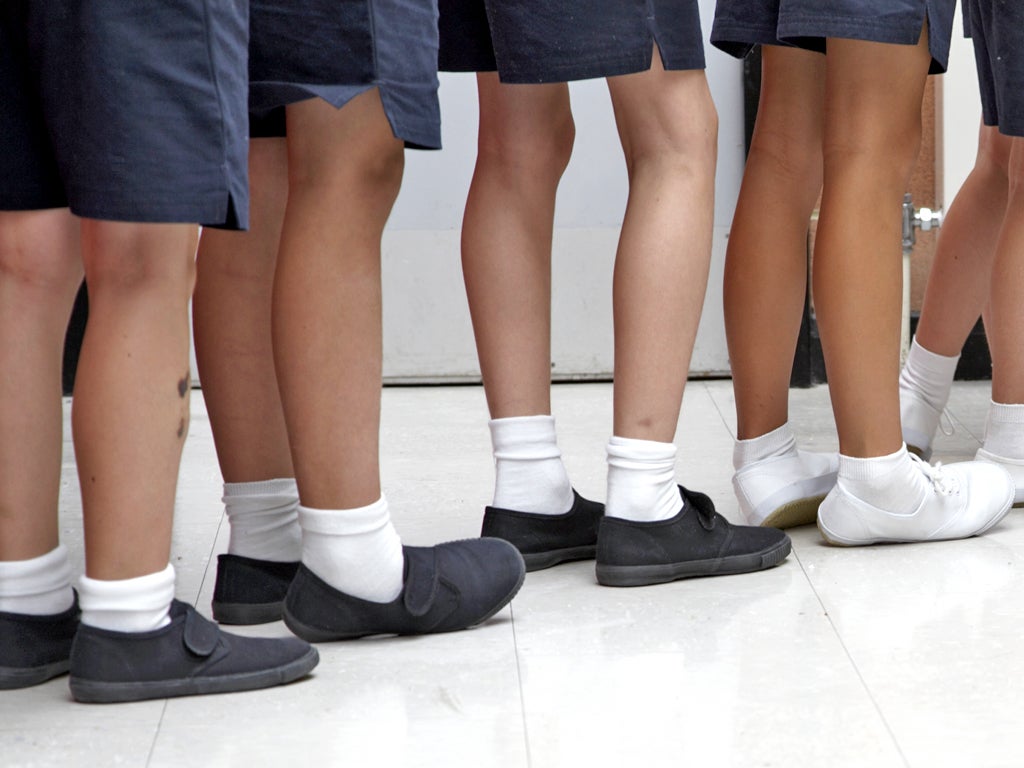Old-fashioned plimsolls with flat soles are better for kids' feet
Modern trainers with thick heels makes it more difficult for young people to learn to run using the front foot

Old-fashioned plimsoll shoes with flat soles are better for children’s feet than modern cushioned trainers because they teach them to run in a more natural manner on the front part of the foot, scientists have said.
The trend towards highly-cushioned trainers with thick heels makes it more difficult for young people to learn to run using the front foot, which causes less impact than striking the ground with the heel.
Once children become accustomed to running in trainers using their cushioned heels they find it difficult to learn to run more naturally, said Mick Wilkinson, a sport and exercise scientist at Northumbria University in Newcastle.
“If I was to advise someone on what to give their child I would say don’t go and buy them expensive Adidas or Nike big-cushioned jobs, just get them a pair of flexible, flat shoes,” Dr Wilkinson said.
“Give them basic foot-ware, nothing fancy, nothing structured, nothing particularly cushioned. There is a lot of evidence that the human foot is structured to cope with the forces of running by landing on the mid-foot,” he said.
“If someone is going to learn to run from first principles let them learn using their natural equipment as much as possible,” Dr Wilkinson told the British Science Festival in Newcastle.
Cushioned trainers have become a universal fashion item for young people but they are not necessarily the best kind of footwear for children who want to take up sports and running, he said.
Studies have shown that the human foot is designed for long-distance running, but only if the runner lands on the front part of the foot rather than the heel, which causes repeated impact shocks.
This is the main reason why bare-foot running is becoming more popular among some long-distance runners. “Lots of people are trying barefoot running. It is massive in America and it’s starting to come over here now,” Dr Wilkinson said.
“The body has in-built, impact-avoidance reflexes that are triggered by sensations through the sole of the feet. That leads you to cushion the landing naturally,” he explained.
Up to 20 per cent of runners using modern running shoes will develop injuries associated with the repetitive impact of striking the heel on the ground, such as stress fractures in the bones of the foot and leg, Dr Wilkinson said.
“Injury rates in running have not changed since the 1970s, despite claims of improvements in running shoes. That has led some to conclude that barefoot running is better,” he told the festival.
“There been a suggestion that barefoot running, or the technique of running that they adopt, could alter some of the impact forces such that injury risk might be reduced,” he said.
Bare-foot running requires people to carefully train themselves over a long period of time to run differently so that they do not damage themselves, but if children can be encouraged to wear simple, flat shoes this would at least help to avoid much of the damage caused by cushioned trainers, Dr Wilkinson said.
“If you are wearing the elevated-heel kind of running shoe it is actually quite difficult to land on the mid-foot. The elevated-heel running shoe encourages heel strike,” he said.
“I would say anything that encourages the transition to a mid-foot strike is beneficial so the more minimal show - moving away from the more cushioned ones - is the take-home message,” Dr Wilkinson told the meeting.
“If you want to start running and you’ve never run before, [plimsoll-like shoes] would be great. If kids learn PE in those type of shoes that would be great because it’s more difficult to go to them if you are already used to cushioned shoes,” he said.
Join our commenting forum
Join thought-provoking conversations, follow other Independent readers and see their replies
Comments
Bookmark popover
Removed from bookmarks